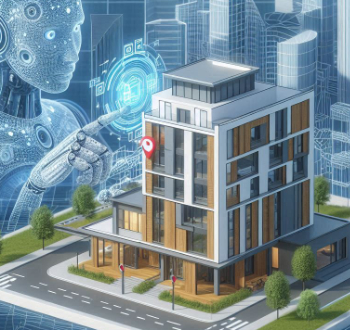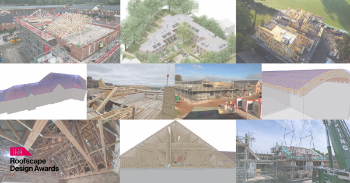Model-based design
Design technology has developed greatly in recent years, from traditional 2D hand-drafting processes to computer aided design (CAD), building information modeling (BIM), and augmented and virtual reality.
Model-based design is a process that involves creating digital representations systems to help with design development and decision-making. It allows rapid analysis and comparison of design alternatives, co-ordination of and collaboration between team members, clear communication and visualisation of information, easy alteration, clash avoidance and so on.
By creating one model, as opposed to multiple independent drawings, a single data set can be developed from which all documents relating to the project are generated.
The process may begin with the creation of a 'design intent model', which in its early stages, could include simple massing diagrams or 2D symbols to represent generic elements of the design.
As the design progresses, the model may develop and the level of detail increase, including, first, objects based on generic representations, and then specific objects with specifications and method statements attached along with information about space allocation for operation, access,maintenance, installation, replacement and so on.
Ultimately, as the contractor and their supply chain take over development of the model, it may be described as a virtual construction model (VCM), containing all the information necessary to allow the objects in the model to be manufactured, installed or constructed.
The concept of model-based design is very broad, and the degree to which a design process is genuinely model-based, rather than simply involving the use of computers is very varied.
The levels of 'maturity' of information modelling have categorised as:
- Level 0: Unmanaged CAD (Computer Aided Design).
- Level 1: Managed CAD in 2D or 3D.
- Level 2: Managed 3D environment with data attached, but created in separate discipline models.
- Level 3: Single, online, project model with construction sequencing, cost and lifecycle management information.
For more information see BIM maturity levels.
Parametric modelling (or parametric design) is the creation of a digital model based on a series of pre-programmed rules or algorithms known as 'parameters'. That is, the model, or elements of it are generated automatically by internal logic arguments rather than by being manually manipulated. For example, a rule might be created to ensure that walls must start at floor level and reach the underside of the ceiling. Then if the floor to ceiling height is changed, the walls will automatically adjust to suit.
For more information see Parametric modelling.
[edit] Related articles on Designing Buildings
- Abaqus simulation software.
- Archidict.
- Architectural communication.
- Asset information model AIM.
- BIM.
- Common data environment.
- Computer aided design CAD.
- Computer aided manufacturing.
- Concept drawing.
- Design coordination.
- Design intent model.
- Design management for construction projects.
- Design programme.
- Manual drafting techniques.
- Samples and mock-ups.
- Shaping Space - Architectural Models Revealed.
- Structural modeling and analysis.
Featured articles and news
Moisture, fire safety and emerging trends in living walls
How wet is your wall?
Current policy explained and newly published consultation by the UK and Welsh Governments.
British architecture 1919–39. Book review.
Conservation of listed prefabs in Moseley.
Energy industry calls for urgent reform.
Heritage staff wellbeing at work survey.
A five minute introduction.
50th Golden anniversary ECA Edmundson apprentice award
Showcasing the very best electrotechnical and engineering services for half a century.
Welsh government consults on HRBs and reg changes
Seeking feedback on a new regulatory regime and a broad range of issues.
CIOB Client Guide (2nd edition) March 2025
Free download covering statutory dutyholder roles under the Building Safety Act and much more.
AI and automation in 3D modelling and spatial design
Can almost half of design development tasks be automated?
Minister quizzed, as responsibility transfers to MHCLG and BSR publishes new building control guidance.
UK environmental regulations reform 2025
Amid wider new approaches to ensure regulators and regulation support growth.
The maintenance challenge of tenements.
BSRIA Statutory Compliance Inspection Checklist
BG80/2025 now significantly updated to include requirements related to important changes in legislation.
Shortlist for the 2025 Roofscape Design Awards
Talent and innovation showcase announcement from the trussed rafter industry.






















